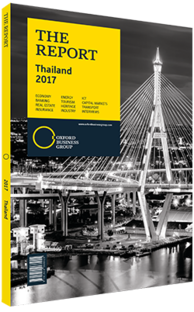Kalin Sarasin, Chairman, The Thai Chamber of Commerce and Board of Trade of Thailand: Interview

Interview: Kalin Sarasin
To what extent is the Thai private sector embracing sustainable growth models?
KALIN SARASIN: At present, sustainability is the keyword for the Thai private sector. Many companies, large and small, are espousing His Majesty the late King Bhumibol Adulyadej’s Sufficiency Economy Philosophy (SEP), which stresses the importance of doing neither too much nor too little. In a business context, this means exercising caution, not scaling up production to an unsustainable level and limiting the overexertion of businesses. At its core, it teaches companies to conduct business safely and inclusively to assist the growth of the entire value chain. After the 1997-98 Asian financial crisis, the private sector applied this theory in earnest, and as a result the Thai economy has been better shielded from ensuing economic shocks than many of our regional and global counterparts. Many foreign businesses operating in Thailand have adopted this philosophy as well.
Sustainability is a long-term goal, and while many regional economies are booming and attaining high growth rates, it is important to consider the Thai context thoroughly in terms of the nation’s strengths. We are no longer an economy with cheap labour, and many manufacturing-related industries have moved to other countries. So, it is important to begin moving on to new businesses that are focused more on technology and less on labour, whilst ensuring that risk management and sustainable growth are taken into account.
How can Thailand reach its goal of having an increased number of service-based industries?
KALIN: The Thai government has set a focus on the “new S-curve” as a means of future economic growth and prosperity for the nation; this involves 10 different industries that are based on value-added products and services. ICT and related industries will play a key role in all of these industries; however, increased investment is needed here. At the moment, the private sector is working with the government to push for the liberalisation of rules and regulations for service industries. We believe that the nation needs investment and expertise from abroad to introduce new business models and aid the sector’s development. Once the investors come, the transition towards the technology industry will follow naturally. Public-private collaboration plays a role in this as well, and it is very encouraging to see that this model is increasingly being used to address the demand-driven challenges facing the nation.
How is the strong growth in the tourism sector being harnessed to stimulate both cross-border trade and domestic consumption?
KALIN: Tourism is indeed among the strongest drivers of growth for the Thai economy; 2016 saw 32m visitors come to Thailand, which is an impressive number. The first initiative needed to harness this potential is to work on dispersing that tourist influx across the nation to some of the secondary cities and provinces, rather than having it concentrated only in large cities. This will allow the entire nation to draw from the benefits of Thailand’s strong and growing tourism industry. Although Thailand was focused solely on the number of visitors in the past, policy is changing and evolving, with a greater emphasis now being put on attracting quality tourists, who will stay longer and spend more per day. Therefore, segmentation of visitors is also a priority when determining future marketing campaigns.
Thailand is the hub of the Indochina region, and we are seeing the tourism industry help stimulate trade across the whole of South-east Asia. Increasingly, tourists are making multiple-stop trips when they travel to Thailand, and tourism is rising across neighbouring nations as a result. This helps drive demand for Thai products in the region, and aids economic growth and trade along border areas. This is all-important, as domestic consumption has not grown significantly in recent years due to a savings-oriented mindset. Tourism and trade are helping compensate for this deficiency.
You have reached the limit of premium articles you can view for free.
Choose from the options below to purchase print or digital editions of our Reports. You can also purchase a website subscription giving you unlimited access to all of our Reports online for 12 months.
If you have already purchased this Report or have a website subscription, please login to continue.

